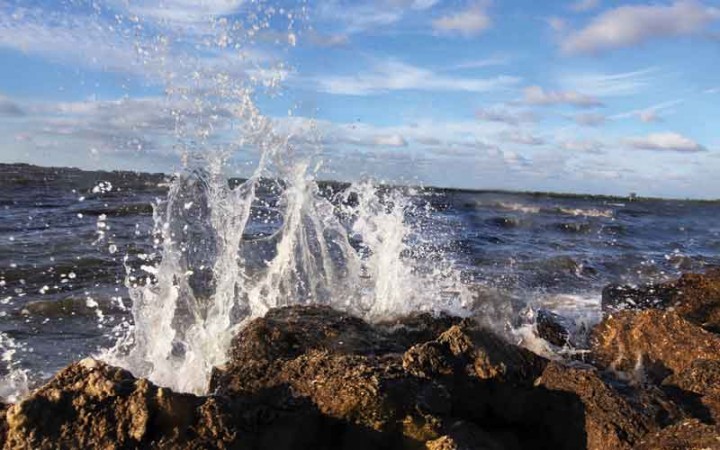INDIAN RIVER COUNTY — Dennis Hanisak says the high school students he is mentoring in a joint Harbor Branch-Indian River Land Trust junior scientist program are members of a generation that will lead the effort to find solutions for environmental problems.
“My peer group has spent a lot of time identifying the problems,” says Hanisak, a research scientist at Harbor Branch Oceanographic Institute and leading expert on sea grass and other aquatic plants. “This generation, kids in high school and college now, know there are problems. They will be so much more focused on solutions. Restoration biology and conservation science are rapidly growing fields.”
A total of 13 students, a mix of sophomores, juniors and seniors from three area high schools, are learning how to do field science from Hanisak and John Hart, a recently graduated FAU student who participated in Harbor Branch’s Semester by the Sea program, spending a term intensely studying marine biology with HBOI scientists, while he was going to college.
“We think near-peer mentorship is very effective in these kinds of programs,” says Hanisak, who is Director of Education and of the Marine Ecosystem Health program at Harbor Branch. “It helps the high school students to learn from someone near their own age and it is a great opportunity for someone like John who is applying for graduate school for next fall and wants to be a professional.”
Starting on Oct. 7, the students from Vero Beach, Sebastian River and Indian River Charter high schools have spent one afternoon a week learning scientific techniques and gaining an environmental overview at the Land Trust’s Coastal Oaks Preserve, a 187-acre tract on the mainland shore of the lagoon a mile north of the St. Lucie County line.
“We started out having them do some water quality analysis and take an initial look at any fish that might be in mosquito impoundments on the property,” Hanisak says. “The students have learned how to do surveys of vegetation and found out a little bit about exotic species. We’ve also had them out in the water in the lagoon where we have showed them how to do seagrass surveys.
“The first part of the program has focused on getting them comfortable in the environment and familiarizing them with tools and techniques. Going forward, beginning with a brainstorming session this week, we are going to ask them to come up with actual scientific projects that will be useful to the Land Trust.
“Our role is to guide them without leading them totally. We will make sure the questions they set out to answer are scientifically sound and that their methods are valid, but we want the questions and project ideas to come from them. There will probably be four groups of three or four students working on separate projects.”
The students, who are volunteers, provided teacher recommendations and went through an application process to get into the program.
Asked about their quality and capability, Hanisak says they are outgoing, enthusiastic and genuinely interested in learning about the lagoon environment.
“They are a great group of kids who work well together despite coming from different schools.”
As a scientist, Hanisak reserves judgment on the students’ capabilities. “We will be able to assess ability when we see how the work goes,” he says.
“The first part of the program will culminate with a presentation of student projects at the Harbor Branch Lagoon Symposium in February,” says Land Trust Executive Director Ken Grudens. “Then the students will conduct additional research into the spring. If we can obtain funding for additional years, it is hoped that we will be able to expand next year.”
“What the Land Trust is doing is wonderful and there is a great need for the kind of work the students will be doing,” Hanisak says.
The current one-year Indian River County Junior Scientist Fellows Program was funded by the Land Trust, Harbor Branch and a $7,000 runner-up grant from Impact 100.
“The funds cover a half-time student program facilitator, project equipment and supplies, computer-generated maps of the Coastal Oaks Preserve property, and transportation from the high schools to Harbor Branch each week,” Grudens says.
“It has been great working with these students,” Hanisak says. “I think they will go on to do useful things.”

